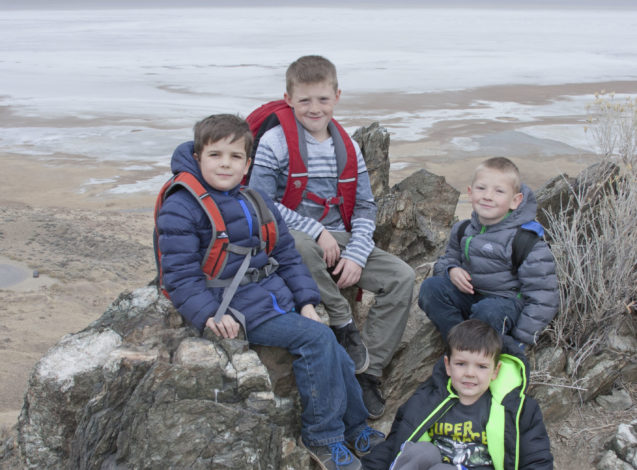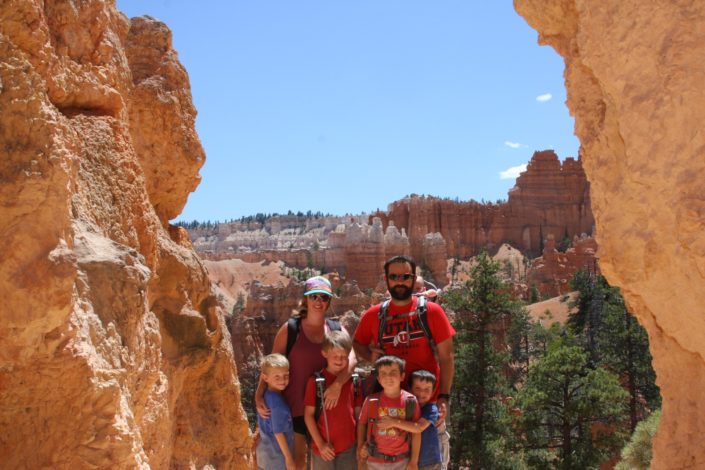Managing Parental Fears: Helicopter parent vs. Free and wild
- Blog Managing Parental Fears: Helicopter parent vs. Free and wild
My family and I spend a lot of time outside. It has been this way since I met my husband. I've always preferred tents over hotels and campfire nights over air conditioned rooms. Our kids thrive outside as well. So as we raise them, this is my hope for our children: That they value adventure and strive for travel and experiences over material possessions. My biggest wish is that they feel the freedom in running wild.
However, as a mom, this also tends to cause my fears to surface. So, how do we manage these parental fears?

 How do you manage your parental fears? Any tips or questions? Leave a comment below!
How do you manage your parental fears? Any tips or questions? Leave a comment below!
Helicopter parent meets free and wild
Our first trip together was to Zion National Park for a weekend of hiking. One day, while we were out hiking, I was yelling at one of our boys to stop and wait for us. They were too far ahead on the trail. AGAIN. This happens often, as we have four boys who all want to lead. When I reined the children in and reminded them of our rules on the trail (if I can't see you and you can't see me, that is not OK), my husband made an interesting observation. He said, "Your greatest wish for them is also your greatest fear." Honestly, he couldn't have been more right. My husband and I complement each other; he's an extrovert while I'm an introvert. He's more laid back and easygoing, and I'm more anxious and tend to worry. When we got married and our individual families of three became one blended family of seven, these different personalities and how we handle our adventures became even more evident to me. We have four boys and one girl. Our girl is nine months old and can be safely strapped into her pack and nestled on my back for our daily adventures. But the boys ... those wild and crazy boys (ages 9, 6, 6 and 5) are always on the loose. Each has a wild spirit and enough energy to keep this mama on her toes. So, while my husband leans toward the free-range side of parenting, I'm more a hovering helicopter parent. It's something I constantly try to overcome.
Conquering fears and gaining confidence
I am scared when they get too far ahead on the trail and I can't see them. My heart speeds up and panic slowly sets in. It freaks me out when they climb up steep rocks or get too close to ledges because the first thing that crosses my mind is what would happen if they were to fall. What if they were nudged slightly by accident or if their foot slipped? What if there was a snake on the trail ahead and they were too busy skipping along that they didn't notice it? Or a bear? What if it was a stranger with ill intent? How about a raging river? Or a ... anything? At that point of panic and fear, my mind really can justify anything being possible. It's interesting, really. As soon as the words leave my mouth and I tell the kids to stay closer or I'm worried about what could happen, my mind suddenly shifts. Thoughts suddenly flood my mind of the alternative. I could wrap them in bubble wrap and never let them leave the house. We could quit hiking, camping, adventuring and all the other things we love to do. But that just doesn't work for me. That's not an option. So here is where we (I) conquer the fears and reservations and teach our children how to mitigate the risk of adventure while still running wild.Learning skills and boundaries
In our adventures, we seek teachable moments and talk about important things that will keep the kids safe. We've taught them to be aware of their surroundings. We tell them when snakes are out and when we're in bear country. We've taught them to replace the clothes they ate in and to camp away from where the food was prepared. They know not to keep food in their tent or anything with a scent that might attract a wild animal. They know of the dangers of raging rivers and strong currents and to always wear a helmet when skiing. We bring it to their attention when they are next to a ledge or somewhere they could potentially fall of off and get hurt. We look for opportunities to educate and empower them to make the right decisions for themselves. Scared parents raise scared kids. If I am scared, my children will pick up on it. If Mom is fearful, then there must be a good reason and we should be also. But I want to raise BRAVE kids. I want to raise adventurers who won't let fear hold them back. I want them to look fear straight in the face and say, "I know how to handle you. I'm smart and brave and I will push forward anyway." The truth is, the growth and confidence gained from adventuring outside is far greater than any amount of power fear may have. Our goal is to recognize that, smash through those fears and push forward as we continue to have epic family adventures. How do you manage your parental fears? Any tips or questions? Leave a comment below!
How do you manage your parental fears? Any tips or questions? Leave a comment below!
Read More
Photos courtesy of Kristi Field.Related Content




Comments